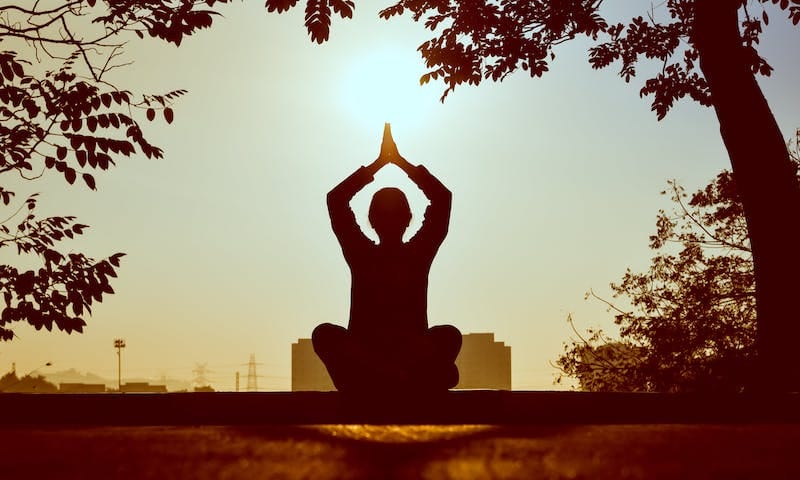5 Essential Yoga Poses for Musicians: Preventing Repetitive Strain Injuries

Some people might not think being a musician takes a toll on the body. While there are countless benefits to playing music, it can also be a physical workout that wears down your muscles and joints, over time. That’s especially true when it comes to repetitive motions that can cause strain injuries.
Whether you’re a singer, guitar player, pianist, or play the classical violin, taking care of your body is essential to play your instrument to your full potential.
Yoga is one of the best ways to prevent repetitive strain injuries while taking a holistic approach to your overall well-being. Let’s dig a little deeper into why it’s important for musicians to adopt this approach before looking at a few essential poses that can prevent injuries and keep you feeling (and playing) your best.
A Holistic Approach to Wellness
There’s no denying the mental and physical health benefits of music. Research has shown that playing an instrument:
- Improves and strengthens the mind
- Reduces stress
- Increases flexibility
- Improves heart health
Playing music can also improve your mood, not only by reducing stress, but by actually increasing serotonin and endorphins in the blood – naturally occurring chemicals responsible for feelings of happiness.
As a musician, incorporating yoga into your routine is another great way to improve your overall well-being naturally. Not only can it help to prevent strain and injury, but it’s another way to reduce stress and get yourself in the right mindset to fully embrace and enjoy the music you create.
You don’t have to be experienced in yoga to get started with some beneficial poses. There are a few essential ones that can help you reduce your risk of strain injuries right away.
1. Downward Dog
Even if you’ve never done yoga before, you’ve likely heard of this position. It’s great for violinists or anyone who needs to sit while playing an instrument and wants to work on their posture. If you’re a beginner, start by getting down on all fours. With your palms on the floor, bring your feet back and straighten out your elbows. This allows you to form a triangle with your body. Pretend someone has a string attached to the base of your spine and is gently pulling you up.
Downward dog helps to stabilize the body and strengthens your back, shoulders, and upper arms. It also strengthens the hands, wrists, and fingers, reducing the risk of straining or injuring your most important tools.
2. Piano Hands
This yoga position specifically focuses on the hands and fingers. Despite the name, it’s great for any musician who has to utilize their fingers quickly, including saxophone players and guitar players.
Doing “piano hands” couldn’t be easier. Simply imagine you have a keyboard in front of you and wiggle your fingers as though they’re dancing across the keys. Shake out your hands, and rest them on your lap for a few minutes. This exercise helps to improve circulation and ease any stiffness that might regularly occur in the joints.
3. Cat/Cow Pose
While it might sound silly to put yourself in poses named after animals, doing a cat and cow pose in succession can help to release tension in your spine if you’ve been sitting for a while in a rehearsal or practicing on your own. It will elongate the spine and can help to prevent back and muscle aches.
Get on your hands and knees with your hands shoulder-width apart. Then, inhale deeply while you curve your lower back and bring your head up. Exhale as you bring in your abdomen and arch your spine like a “cat” you might see on Halloween. Repeat this motion, inhaling and exhaling slowly, several times.
4. Eagle Pose
No matter what instrument you play, holding onto something for long periods of time can wreak havoc on your shoulders. The Eagle Pose is a great way to alleviate tension in the shoulders while strengthening your muscles. Plus, you can do it from a seated or standing position.
Cross your right arm underneath your left before wrapping your forearms around each other. Gently press your elbows together as you raise them to shoulder height. Hold for a few seconds before switching which arm is on top.
5. Child’s Pose
If you’re new to yoga, child’s pose could end up being your go-to for relaxation and stress relief. You might not feel like you’re doing much. But, it actually helps to relax the shoulders and the hips. For a musician, that can help with alignment and breath support, so it’s especially effective for singers or brass/woodwind players trying to increase their lung capacity and breath control.
A child’s pose starts by sitting on your knees. Lean your body forward while remaining in that seated position. Don’t let your heels leave your buttocks! That’s all there is to it. You can rest your forehead on the floor and take a few slow, deep breaths as you relax.
Making Yoga a Priority in Your Routine
One of the great things about yoga is that you can do it just about anywhere. That’s great news for musicians who are often on the road and want to stay healthy and safe.
But, what about if you tend to just play for fun? Maybe you already have a home studio or a space dedicated to your music. Why not make it your yoga room, too? If you don’t, consider transforming an area of your home into a workout space. The garage is often a great location for fitness, especially if it doesn’t regularly get used for other things. You can store necessary equipment like yoga mats and blocks, soundproof it to enjoy gentle music or nature sounds, and take advantage of all of the benefits of yoga before you pick up your instrument for the day.
Whether you’re a hobby musician, you play the occasional gig, or you’re a professional, it never hurts to take a holistic approach to your health and naturally reduce the risk of injuries. Yoga can benefit your life in so many ways, and might even end up making you a better musician and extending your music career. Give these poses a try to get started. As you start to see how much they benefit you, you might become interested in introducing more complicated poses and positions into your daily fitness routine.





